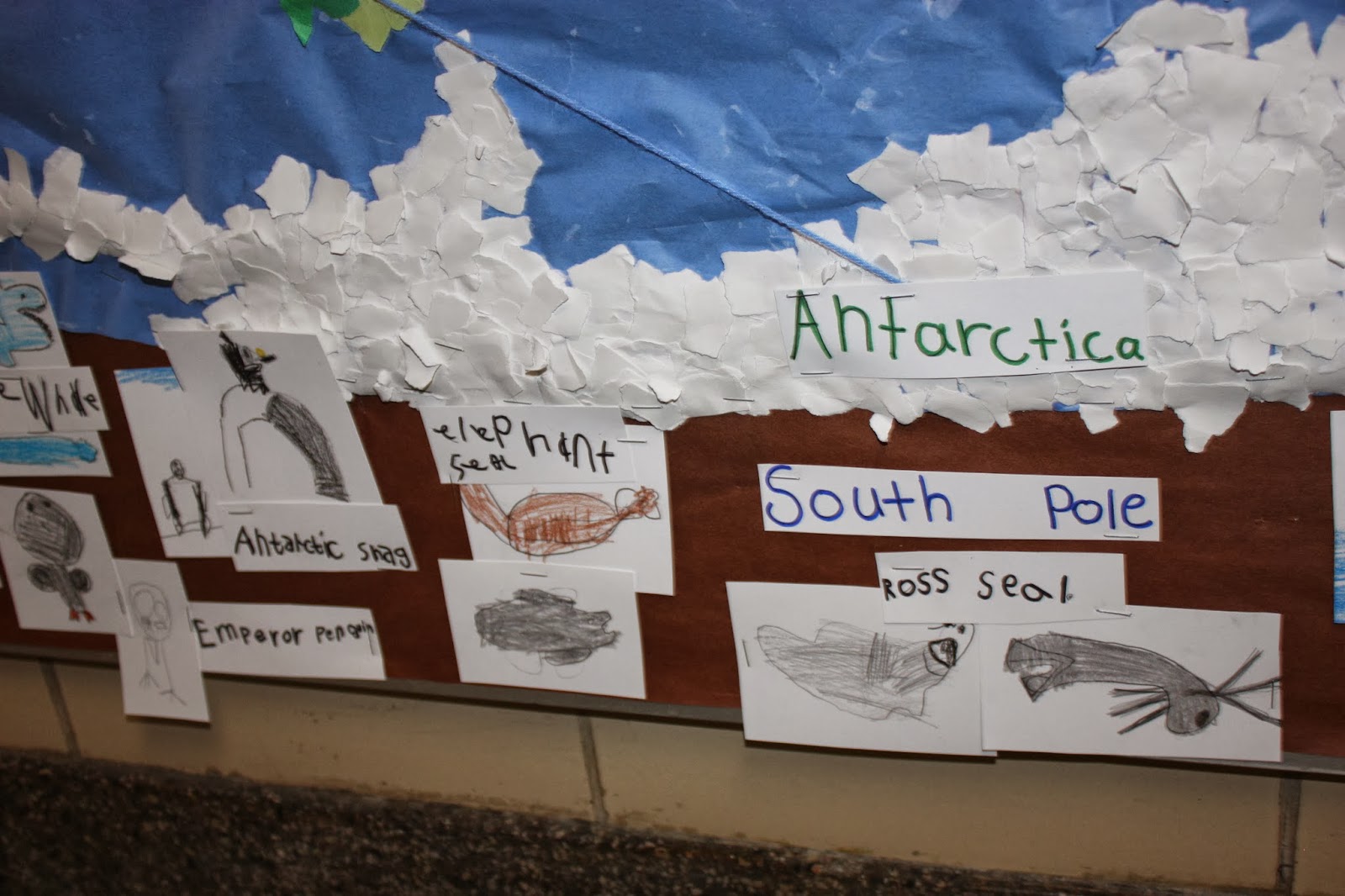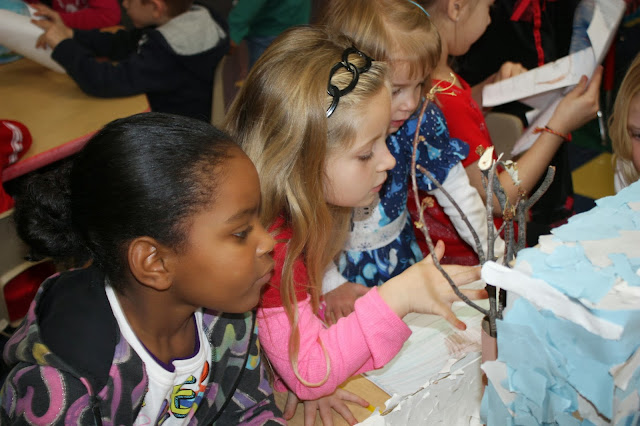This week the students finished creating their map for the hallway. They are excited to share their knowledge with other students in our school. In addition, we researched the types of animals that live in the arctic and the types of animals that live in the antarctic.


The students helped me hang their completed map in the hallway.
Students labeled the 7 continents (we sang a couple catchy songs about the 7 continents too!), the north pole, south pole, arctic circle, and polar regions.




We researched the different animals that live in polar regions by looking at a
couple of the following websites.
Animals Found in Antarctica:
National Geographic:
Animal Planet:
We also researched polar regions and their animals in multiple different books.
We made a Promethean Board flip chart with animals that live in the Antarctic and...


those animals that live in the arctic.



Students then drew illustrations and labeled the animals that live in the arctic and antarctic regions.






Here is what our map looks like with the arctic animals around the North Pole/Arctic Circle
and the antarctic animals around South Pole/Antarctic.

We are excited to see where our polar region study takes us next.
Please continue to check back to see our research and documentations!
Stay warm and have a great week!
Mrs. Julie Atkin


















































